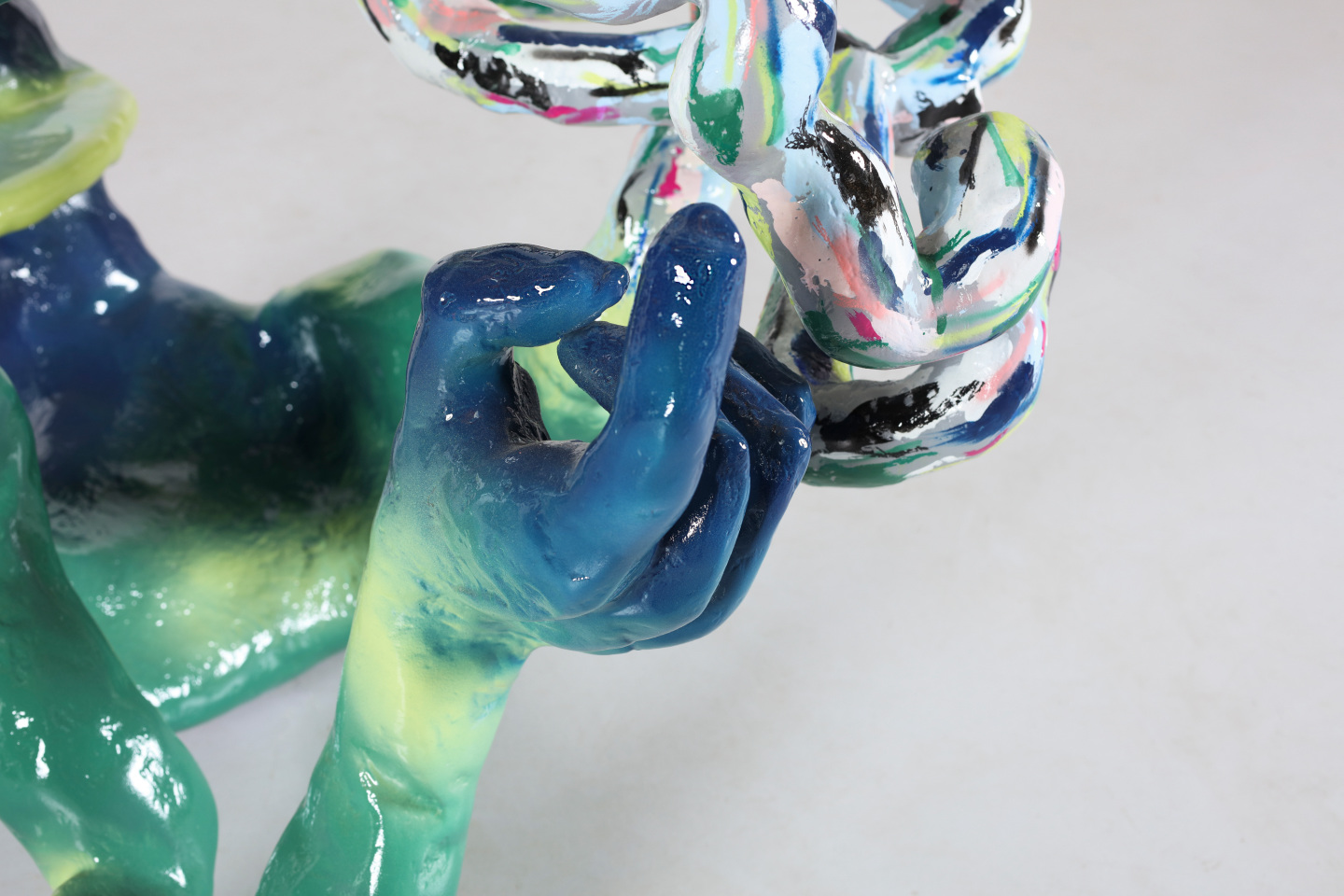For a half century, the Western world has been soaking in an ice tub of Danish Modernism. How much drearier can good taste get? This stagnant traditionalism has reinforced the unfortunate perception that craft is an antonym to innovation. But Modernism was not dull at birth; it began as an explosively creative collaboration between art, design, and industry—and its truest tradition is change. Thankfully, craft is finding that it can be young, again. Witness: The Wobble Style. For a primer, take a spin in the psycho-physical blender that is Leo Orta and Victor Miklos Anderson of OrtaMiklos’s current show, “Relations,” at Friedman Benda in New York.
It has only been a couple years since the duo were students at Design Academy Eindhoven, the Dutch school that has long been a talent volcano, spraying forth Formaphantasma, Nacho Carbonell, and Martaan Baas—three progenitors of much of the design world’s most interesting energy today, including the wobble. Baas’s brightly colored doodle-like forms defined much of the character of the Wobble Style, as seen in some works of Thomas Barger, Jonathan Trayte and Serban Ionescu. A friendly front has been, for them, a useful ploy for delivering crackling jolts of combinatory pizzazz. In the work of OrtaMiklos, the veil falls away—naked aggression and an electric sizzle makes their objects, ostensibly furniture, feel dangerously exciting to be near.

Consider one of their collaborations: Stark Effekt (2021). It is a desk, yes, but calling it one would be like calling The Garden of Earthly Delights a wall hanging—you’d learn nothing about what is significant and meaningful in the work. The surface is a fractured set of ombre lacquered panels, while the base includes four columnar legs, as a table might be expected to have, but tilted precipitously as though falling in a jumble. A branching form, like arcing electricity, ties the elements together. Pastels, yellows, burnt siennas and black give the composition a feel of flamboyantly adolescent cool.
Orta and Miklos Anderson have made a signature of presenting themselves alongside their work but always doing so with balaclavas or stockings concealing their faces. They cast the furniture as the lead, allowing it to be riveting, charismatic, entertaining, while their own bodies become supporting scenery. This approach speaks to a moment in which humans have been decentered by technology and the hyperreal vividness our own digital avatars. We may soon see the individuals beneath the masks, however. OrtaMiklos, once a supernova of wobbliness, has begun to show itself as two different points of brightness, overlayed. The duo is splitting apart, and their current solo show is in fact a three-artist show that includes both their independent works and their collaborations as a duo. One can almost feel the throb of gallerist Marc Benda’s headache reading the press release, which arduously explains that this is a “unique moment” in which the gallery is presenting a duo, post-break up, both together and apart.






Terraforming Body (2021) is the centerpiece of Miklos Anderson’s solo portion of the show. Nominally a shelving unit, it seems to have no analogue. Mixed materials have been taken to a fantastic crescendo in the design world recently with Misha Kahn, Kostas Lambridis, Messgewand and Toomas Toomepuu all practicing a methodology that imports the cut-and-paste spirit of digital mashups into the physical plane. In this vein, Miklos Anderson combines welded sheet metal, cast aluminum, cast bronze, foam and lacquer, announcing the distinctions between parts and techniques through riotously discordant texture, color and form.
Meanwhile, Winter Walk (2021) by Orta is bench, table, light and environment together. Forms are roughly hewn in foam and then given a pale blue hard coating. Rich in fantasy and atmosphere, the work is not merely an object to be held in a room, but a means of visioning a world by disclosing some of its objects. This feeling for narrative structuring recalls some of the projects of Joep van Lieshout, who would imagine an alternate reality and then extrapolate the designs that reality would require.
The Wobble Style is the revenge of ornament against Modernist restraint—it is a maximalism that takes prisoners of all available techniques and period styles and conscripts them into a single schizoid cause. To wobble is to hurtle off the cliff of “good taste” into the briar patch of experimental aesthetics, and Leo Orta and Victor Miklos Anderson wobble so hard they’ll rattle your eyeballs loose.










 in your life?
in your life?

